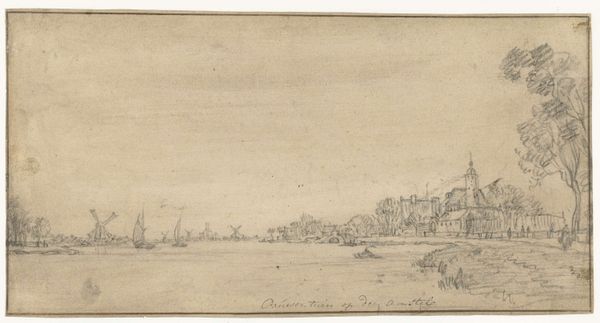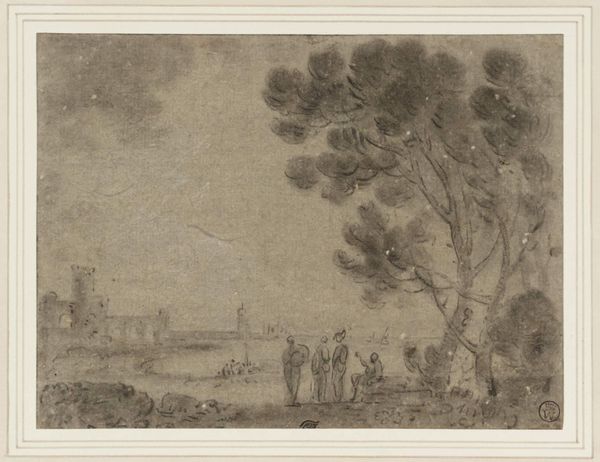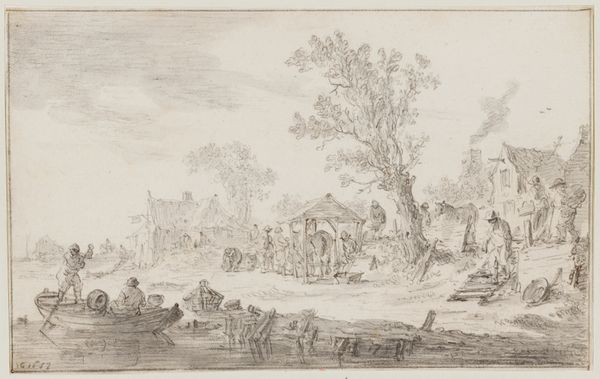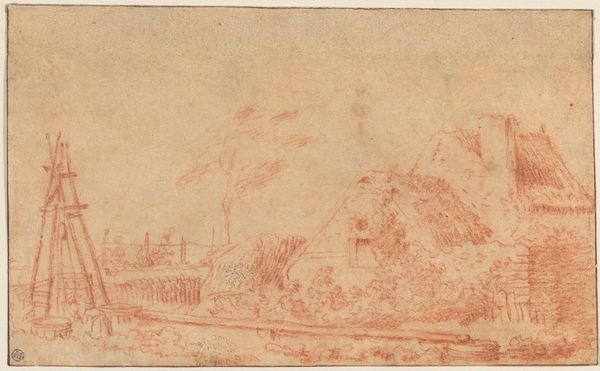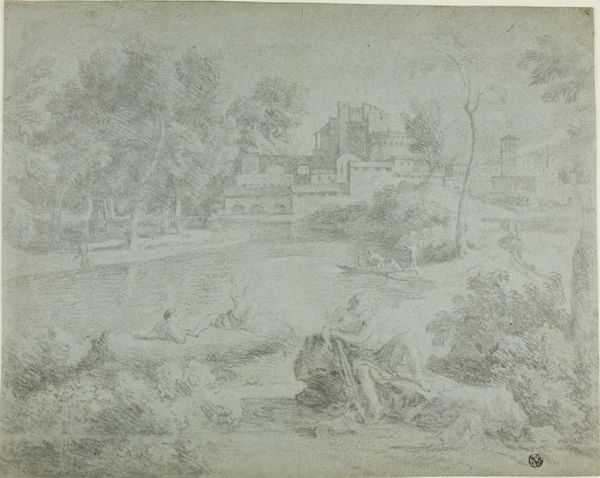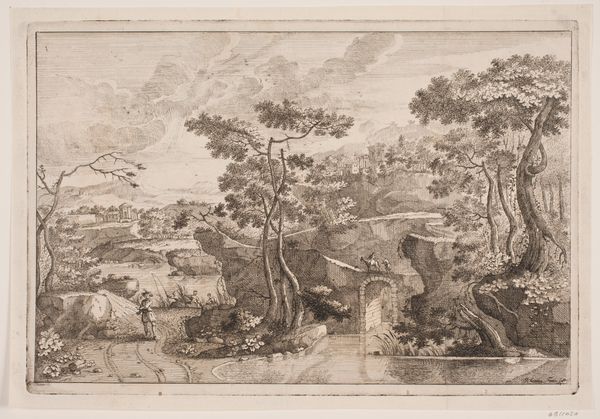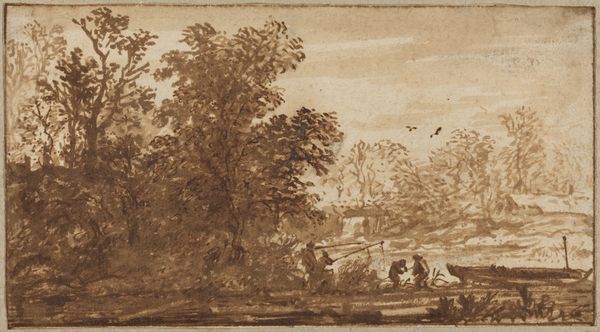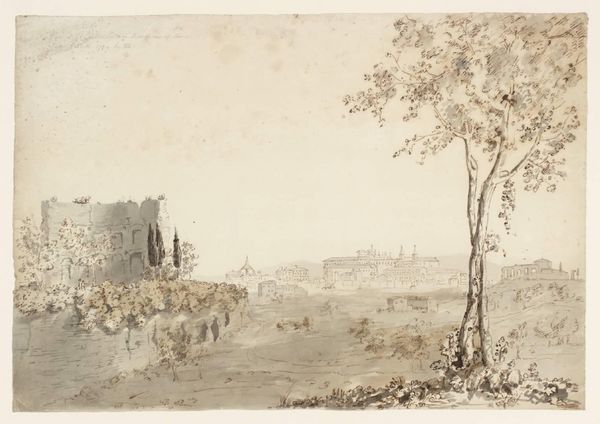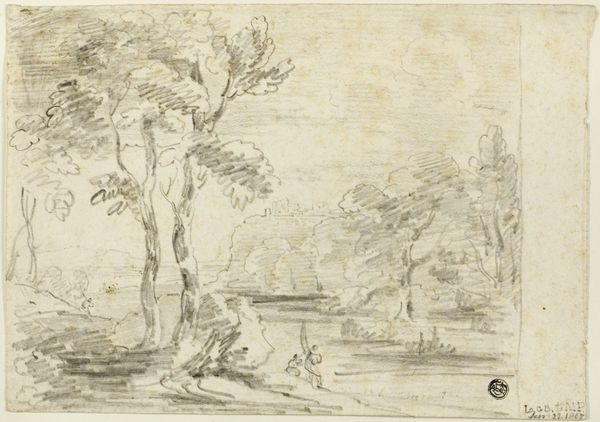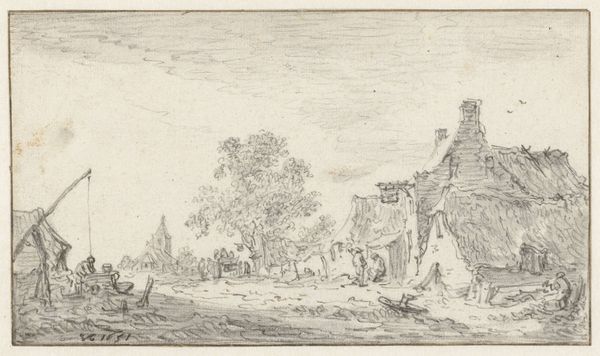
Gezicht op een gedeelte van de Farnesische Tuinen op de Palatijn te Rome 1765
0:00
0:00
Dimensions: height 305 mm, width 526 mm
Copyright: Rijks Museum: Open Domain
Curator: Here we have Charles-Joseph Natoire's "View of a Part of the Farnese Gardens on the Palatine Hill in Rome," dating from 1765, crafted in ink and wash on paper. Editor: Ah, Rome! There’s something incredibly dreamy about this piece. It feels…nostalgic, like a memory half-remembered. The soft, hazy rendering almost makes it appear like a faded photograph. Curator: The drawing’s strengths lie in the academic rigor underpinning its apparent spontaneity. Natoire’s skill is apparent in his command of line, the way he builds up tone with such economic means. Editor: Economic is right! It's spare but rich, somehow. The ruins, the statues overlooking daily life unfolding—shepherds and grazing animals right next to the grandeur. Is that supposed to say something, juxtaposing the ideal and the real? Curator: That juxtaposition is deliberate and speaks volumes about eighteenth-century sensibilities regarding classical heritage. The drawing foregrounds not merely the gardens but the layers of social life and production inscribed within them. This intersection emphasizes the consumable nature of the landscape. Editor: I love how you bring that up! Consumption… not just literally feeding those sheep but also taking in the history, the art, making it part of your world through travel, sketches, conversation... It’s like these drawings were both records and souvenirs. Curator: Precisely. They become commodities circulated within artistic networks, solidifying Natoire's status and furthering a taste for the antique among collectors. We can see the careful detailing, but also how quickly this could have been rendered on site to be sold off afterwards. Editor: It makes me wonder about Natoire himself, wandering around with his sketchbook. Did he imagine people like us, centuries later, peering into this snapshot of his Rome? It makes you want to hop on a time machine! Curator: What resonates profoundly is the convergence of aesthetics and labor embedded within the ink and paper—from its creation as a drawing to its current status as a historical artifact. Editor: Well said! Now, every time I look at old landscapes, I won’t just be thinking of pretty views, but also of the whole bustling ecosystem of making, trading, and remembering that went into even the simplest ink sketch. Curator: And how those processes influence value and perception. Food for thought.
Comments
No comments
Be the first to comment and join the conversation on the ultimate creative platform.


